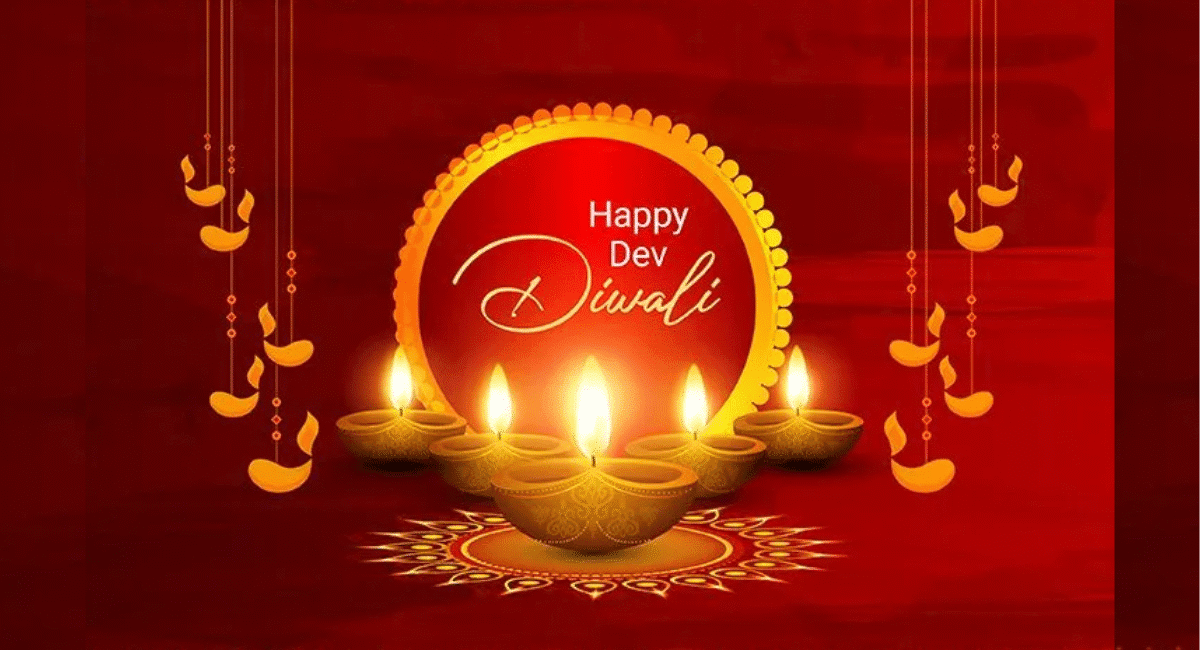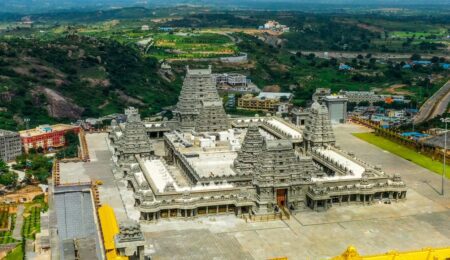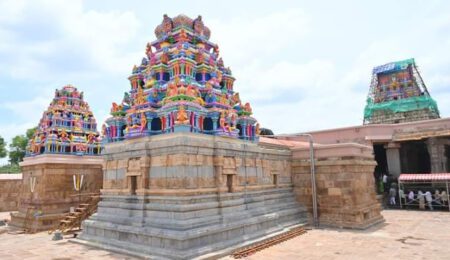Dev Diwali – The Spiritual Festival of Lights in Kashi
Introduction: What Is Dev Diwali?
Dev Diwali (also spelled Dev Deepawali) is a captivating, luminous festival observed in Varanasi (Kashi), India, celebrated on the full moon night (Purnima) of the Hindu lunar month of Kartik. Literally meaning “Festival of Lights of the Gods,” Dev Diwali is often referred to as the “Kashi Dev Diwali” and transforms the ghats of Varanasi into a spectacular blaze of diyas (oil lamps), signifying the descent of gods and goddesses to earth to bathe in the sacred Ganges. In 2025, Dev Diwali Varanasi 2025 promises an especially grand celebration, blending ancient spiritual traditions with vibrant cultural expressions.
Historical Origins of Dev Diwali
The roots of Dev Diwali stretch back centuries, deeply embedded in Varanasi’s religious and mythological tapestry:
- Mythological background: According to Hindu belief, on the full moon night of Kartik, deities descend to the earth, particularly to holy places like Kashi (Varanasi), to take a holy dip in the Ganga. Locals light thousands of lamps along the ghats to welcome and guide them.
- Association with Lord Shiva and Ganga: As one of the holiest cities in Hinduism, Kashi is strongly associated with Lord Shiva, and the Ganga their spiritual home. Lighting lamps symbolizes illumination, divine welcome, and spiritual cleansing.
- Historical mention: Although the practice of lighting large numbers of lamps on Kartik Purnima is not documented in very early scriptures, references in medieval pilgrim chronicles and later devotional literature affirm that by the late medieval era, lighting diyas on the Ganges had become customary. Gradually, it evolved into the state-organized and community-supported Dev Deepawali festival observed today.
Why Dev Diwali Is Celebrated on Kartik Purnima
The timing of Dev Diwali is rooted in sacred symbolism:
- Kartika Month: Kartik (roughly October–November) is considered highly auspicious in Hindu tradition. It includes several festivals such as Diwali, Govardhan Puja, Bhai Dooj, and Kartik Purnima itself. The full moon of Kartik is considered especially pure and spiritually potent.
- Full Moon (Purnima): Hindu festivals often align with lunar cycles. The brightness and splendor of the Kartik full moon amplify the festival’s spiritual energy, symbolizing the illumination of the soul.
- End of Dev Diwali Celebrations: For many pilgrims, the Kartik Purnima also marks the culmination of the month-long celebrations following Diwali, making it both a finale and a distinct spiritual high point.
Dev Diwali Varanasi 2025 will be observed on Kartik Purnima, aligning precisely with tradition and offering pilgrims a sacred and visually breathtaking conclusion to the festival season.
Dev Deepawali Rituals in Varanasi
Dev Diwali rituals, or Dev Deepawali rituals, combine sacred bathing, lighting, prayer, and cultural performances:
- Ganga Snan (Holy Dip)
- Early morning or before dusk, devoteesblocals and pilgrims alike gather along the ghats for a holy dip in the Ganges. The ritual is believed to cleanse sins and bestow spiritual merit.
- Lighting of Diyas on the Ghats
- Perhaps the most iconic feature: More than one million clay lamps are lit along the ghats, steps, and pathways overlooking the river. Each lamp symbolizes an individual’s prayers, intentions, or welcome to the divine.
- It’s a community effort families, local priests, and volunteers distribute and light lamps together, creating a breathtaking sea of lights reflected on the flowing Ganga.
- Puja (Worship) and Prayers
- Many pilgrims perform personal puja, offering flowers, fruits, incense, and small lamps. Offerings to deities like Ganga Maa (Mother Ganges), Shiva, Vishnu, and their avatars are common.
- Kashi Ganga Aarti
- The Kashi Ganga Aarti, performed at Dashashwamedh Ghat (and other ghats), takes on heightened significance during Dev Diwali.
- Spectacular aartis—vast rituals involving large flame lamps, chants, conch shells, bells, and devotional music—illuminate the evening air.
- The aarti is a communal, sensory-rich experience: hundreds create rhythm with bells and chants; thousands of observers absorb the divine energy.
- Cultural Performances and Bhajans
- Alongside the religious rituals, traditional music, devotional singing (bhajans), and occasionally classical dance are performed on the ghats and in nearby temples.
- Soundscapes of bells, conch shells, singing, and water enhance the spiritual ambiance.
- Food, Prasad, and Local Festivity
- Temporary stalls near the ghats and lanes serve local snacks, sweets (like malpua, peda, and kheer), and devotional prasad. Sharing food fosters unity and communal joy.
Overall, Dev Deepawali rituals weave together physical acts of devotion with sensory and cultural celebration, creating an unforgettable spiritual atmosphere.
Significance of the Kashi Ganga Aarti During Dev Diwali
The Kashi Ganga Aarti is central to the Dev Diwali experience. Its significance on Kartik Purnima includes:
- Sacred illumination: Oil lamps (deepams) during aarti symbolize the journey from darkness to light, ignorance to knowledge.
- Cosmic connection: Lighting the lamp amid chants connects human consciousness with divine energy, especially potent under the full moon of Kartik.
- Collective devotion: The aarti, witnessed and often joined by thousands, unites hearts and voices in a shared plea for peace, prosperity, and spiritual awakening.
- Visual majesty: At Dev Diwali, the ghats look like a sky of terrestrial stars as each lamp twinkles. The rising smoke and shimmering reflections on the Ganges create an almost otherworldly ambiance.
In summary, Kashi Ganga Aarti becomes more than a ritual it becomes a luminous bridge between the earthly and the divine, a spectacle of unity, devotion, and sacred beauty.
How to Participate: Your Guide to Dev Diwali Varanasi 2025
Let’s break it down into steps for pilgrims and visitors planning to take part in Dev Diwali Varanasi 2025:
1. Timing and Planning Your Trip
- Festival date: Kartik Purnima in 2025 is expected to fall in mid–November (the exact date should be confirmed with a Hindu calendar or local Varanasi temple announcements). Planning early ensures better accommodation and permits.
- Length of stay: Ideally, book 2–3 days around the date so you can experience not only the main night but also related rituals and exploring local temples and markets.
2. Choosing Accommodation
- Opt for hotels or guesthouses near Dashashwamedh Ghat (center of activities) or in the Old City area within walking distance of most festivities.
- For quieter reflection, upstream in Assi Ghat or lodgings near Varanasi Cantonment offer respite with reasonable proximity.
3. Participating in Rituals
- Ganga Snan: Be at the ghats early morning or before evening. Modest clothing and respect for the sanctity of the water are expected.
- Lighting Diyas: Many local vendors provide tiny oil lamps for sale during Dev Diwali. Alternatively, hotels often distribute them to guests. Bring some small incense and flowers for personal offerings.
- Joining Puja and Aarti: At Dashashwamedh Ghat, follow local guidanceblines and spaces fill quickly, so have your place early. Aarti timing is around just after sunset, but visiting in daylight before lighting enables vantage points.
- Volunteering: Several local organizations arrange diya distribution or seva (service). Joining such efforts adds deeper meaning to the experience.
4. Experiencing Kashi Ganga Aarti
- Temple priests and volunteers perform the aarti, but visitors can participate respectfully.
- Many offer a small donation and bring their own diya or candle. You’ll be guided by local priests or coordinators.
- Photography is allowed but be mindful of the devotion around you. Avoid flash to respect mood and media.
5. Cultural and Spiritual Immersion
- Attend a bhajan session informal singing in Sanskrit or Hindi around temple courtyards or adjoining paths.
- Visit temples like Kashi Vishwanath, Tulsi Manas, or others illuminated during Dev Diwali magnificent scenes of sanctity and light.
- Wander through local markets for devotional artifacts mini clay lamps, incense sticks, brass bells, prayer beads, and religious paintings.
6. Safety and Practical Tips
- The ghats get densely crowded—keep your belongings secure and wear slip-resistant footwear due to occasional wet, uneven steps.
- Keep water and light snacks handy.
- Coordinating with a local guide or trusted friend helps navigate crowds and rituals respectfully.
Deeper Spiritual Significance of Dev Diwali
Beyond its vibrancy, Dev Diwali holds profound meaning:
- Victory of Light Over Darkness
- Hindus see Kartik full moon as when light truly conquers darkness. Lamps symbolize divine wisdom dispelling ignorance.
- Divine Presence in Rituals
- By lighting millions of lamps, devotees symbolically call the divine into human realms—briefly uniting heaven and earth.
- Cleansing and Renewal
- Ganga Snan represents purification of body and soul; the lamps further reflect inner cleansing and renewal of purpose.
- Communal Faith
- The festival is highly participatory families, priests, volunteers, musicians, vendors, and pilgrims come together, unified in faith and service.
- Kashi’s Sacred Identity
- As one of the world’s oldest living cities and Hinduism’s spiritual epicenter, Kashi becomes animated during Dev Diwali its spiritual resonance magnified by centuries of devotion.
- Full Moon’s Symbolism
- Kartik Purnima’s full moon stands as a symbol of completeness, soul’s fulfillment, and divine blessing. Dev Diwali fits this cosmic moment beautifully.
Tips for Photographers and Observers
If you’re capturing Dev Diwali through a lens:
- Golden hours (just after sunset) are magical, the glow of lamps glistening on the river is ethereal.
- Use a tripod and low-light settings if possible.
- Frame both the illuminated ghats and reflections for resonance.
- Focus on details lit diyas, hands holding flames, devotional offerings—to convey intimacy.
- Capture broader panoramas too ghats, crowds, temple silhouettes, and moon above.
Impact on Varanasi and Local Community
Dev Diwali is more than spiritual, it’s cultural and economic:
- Tourism boost: Hotels, guesthouses, restaurants, boat services, and transportation flourish with domestic and international pilgrims.
- Local artisans: Clay-lamp makers, flower sellers, priests, musicians, sweet vendors all benefit economically.
- Cultural preservation: Traditional bhajans, aartis, and rituals gain renewed vitality through community engagement.
- City pride: For residents, Dev Diwali reaffirms Kashi’s status as a global spiritual beacon and preserves its distinctive sacred identity.
Summary Table
| Aspect | Details |
|---|---|
| What | Dev Diwali / Dev Deepawali – Festival of Lights of the Gods in Kashi |
| When | Kartik Purnima (Full Moon of Kartik month) —in 2025 in mid-November |
| Where | Varanasi (Kashi), along the ghats of the Ganga, especially Dashashwamedh Ghat |
| Key Rituals | Ganga Snan (holy bath), lighting millions of diyas, puja, Kashi Ganga Aarti, bhajans, cultural performances |
| Spiritual Significance | Divine presence, light over darkness, communal devotion, renewal, purification |
| How to Participate | Plan early, choose ghats and lodging wisely, engage in rituals respectfully, photograph thoughtfully, experience local culture |
| Cultural/Economic Impact | Tourism boost, artisan livelihood, cultural preservation, and city’s spiritual identity reinforced |
Frequently Asked Questions (FAQ)
1. Is Dev Diwali the same as Diwali?
No, while both are festivals of lights, Diwali (Deepavali) is the pan-Indian Festival of Lights celebrated on the new moon night of Kartik. Dev Diwali, however, occurs on the full moon night of Kartik, about 15 days later, and is specifically celebrated in Varanasi with the belief that gods come to bathe in the Ganga.
2. How many lamps are lit during Dev Diwali?
Estimates suggest over a million clay lamps (diyas) are lit along multiple ghats, particularly Dashashwamedh, Assi, and others by devoted families, priests, volunteers, and municipal teams.
3. Can international visitors participate?
Absolutely. Visitors of any faith are welcome to observe or participate respectfully. Modest attire, quiet devotion, and following local guidance help engage properly.
4. Are ceremonies the same at all ghats?
While the customs (dip, lighting, puja) are similar, Dashashwamedh Ghat hosts the most elaborate Kashi Ganga Aarti so arriving early ensures a good vantage point. Other ghats offer quieter, more contemplative settings.
5. Is boating allowed during Dev Diwali?
Yes, boat rides are available and highly recommended for unique vantage points of the giantly lit ghats. Book in advance; early evening rides capture the night lights and moon reflection.
Final Thoughts
Dev Diwali is not just a festival; it’s a living embodiment of faith, light, community, and ancient devotion in Varanasi. In Dev Diwali Varanasi 2025, expect the ghats to bloom with millions of lamps, echoing with prayers, bhajans, and the gentle murmur of holy waters under a radiant Kartik full moon.
Whether you are a pilgrim seeking spiritual cleansing or a traveler drawn by the sheer luminous beauty of Kashi Ganga Aarti, Dev Diwali offers a chance to witness the divine in earthly form—a night when the gods descend, and the city glows with sacred brilliance.




Leave a Comment